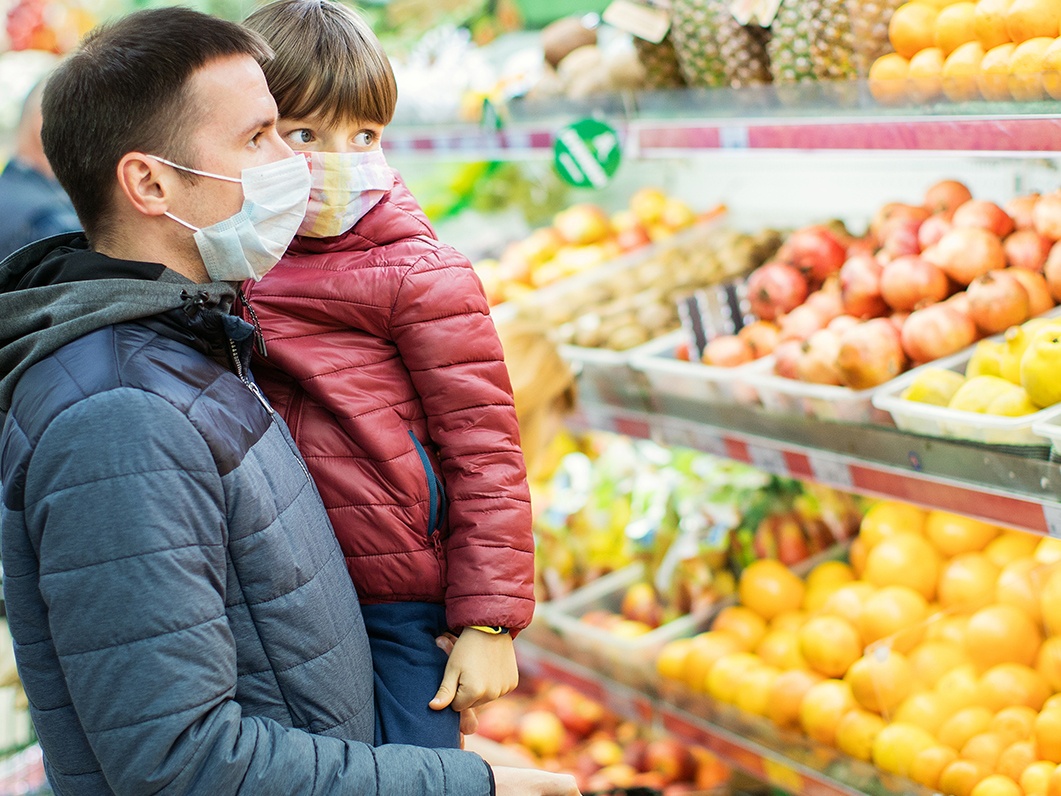Part II in a series
Last week we shared some insightful information from a recent article published at forbes.com, which you can access in its entirety at https://www.forbes.com/sites/phillempert/2020/10/19/food-trends-2021-staying-healthy-in-a-post-covid-19-world/?sh=64f74265485b. The story, written by Forbes contributor Phil Lempert, whose own website is https://www.supermarketguru.com, looks at food trends that have sprung up in the wake of the COVID-19 pandemic.
With a solid background in food, retail and ag, Lempert is truly the “guru” when it comes to food production, marketing and consumption, and the Forbes piece, “Food Trends Forecast 2021: Being Healthy in A Post Covid-19 World,” addresses what he calls the “frailties of the food world and its supply chain.”
Among the issues tackled is the fact that many Americans are wanting to go back to their “pre-COVID weight.” Again, turning to the “Spoon Guru” a London-based health and wellness platform developed by a global AI nutrition technology operation, Lempert shares the goal of weight loss post-COVID “will be based on a combination of three things: CAPABILITY, OPPORTUNITY and MOTIVATION.”
He wrote, “Capability is defined as the individual’s psychological and physical capacity to engage in the activity concerned. It includes having the necessary knowledge and skills…”; … “opportunity is defined as all the factors that lie outside the individual that make the behavior possible or prompt it…”; and … “motivation is defined as all those brain processes that energize and direct behavior, not just goals and conscious decision-making; which we know every January 1st are made with good intentions, and within 45 days are forgotten. It includes habitual processes, emotional responding, as well as analytical decision-making.”
And, Lempert added, “It is these interactions that lead to behavior change; and the food technologies that we spoke of earlier, are today’s tools and enablers that can support shoppers in achieving these goals.”
The problem is not with the desire but rather with the knowledge, and this is where the “insights shoppers can glean from retailers who fuel their search and apps across the globe using Spoon Guru.”
Health claims on brands confuse many consumers, according to additional research. Lempert said, “Imagine the flood of questions that supermarket managers and their retail dietitians will be bombarded with when blends of supplements AND foods include proven immunity enhancers like Vitamins A, C, D, E and zinc appear on shelves.”
Noting that COVID-19 has “intensified the search for immunity-strengthening foods and supplements,” Lempert cited a GlobalData survey in June 2020 that said “80 percent of global consumers are understandably concerned about COVID-19, and 23 percent admit they’ve stockpiled more vitamins and supplements recently.”
He also said that immune function “ties with muscle health/strength as the #5 benefit health-motivated eaters seek from food,” and data from an April survey taken of more than 1,000 adults in the United States by the International Food Information Council indicated they are concerned with immune function (40 percent), weight management (62 percent), energy (57 percent), digestive (46 percent) and heart health (44 percent) as a “food-centered objective.”
He wrote, “The reality of what we’ve seen during the pandemic is the return to comfort foods and familiar brands that made them feel calm and comfortable – brands with a long heritage that solidified their reputations for being safe and a sure bet – shoppers knew what to expect from them – and part of it was that they just plain tasted great. And they were on the shelves.”
Comfort foods, however, are a sector of the food business that has “experienced a huge benefit from the pandemic,” and that in turn “has been a boon for those iconic food brands that have seen their sales decline over the past few years as shoppers shifted to smaller upstart brands that had more innovate recipes, more exciting flavors, healthier profiles with more sustainable and simple ingredients.”
In 2020, “People gravitated to the brands they knew, that they grew up with, those that their families bought for generations,” which Lempert said has been an “unbelievable opportunity for these iconic brands.”
Another interesting survey conducted by OnePoll on behalf of Sensodyne toothpaste, “found 74 percent of respondents said cooking has been a successful coping mechanism for them as they deal with the stress of being home. Forty-four percent of those surveyed said they have even learned a new recipe during quarantine, and 32 percent have taken an online cooking class.”
Looking at pre-pandemic numbers, Lempert wrote that “the average shopper visited a food store 2.3 times a week and spent on average about 20 minutes per shopping trip.” They spent time taking in “the aromas and colors of the produce department, sampling new products, learning how to prepare a new recipe and consulting with a retail dietitian led to enhanced and satisfying shopping experiences.”
Post-COVID is different, and Lempert commented, “Today we are lucky if shoppers come to the store even once a week.”
Moreover, he wrote, “According to The Confidence Board Global Consumer Confidence Survey conducted in Q4 2019 (pre-COVID-19) 14 percent of consumers reported that they were worried about increasing food prices, and 68 percent of consumers said they are cutting back on their food purchases.”
Next week we’ll look at more emerging trends, with great thanks to the Guru.



